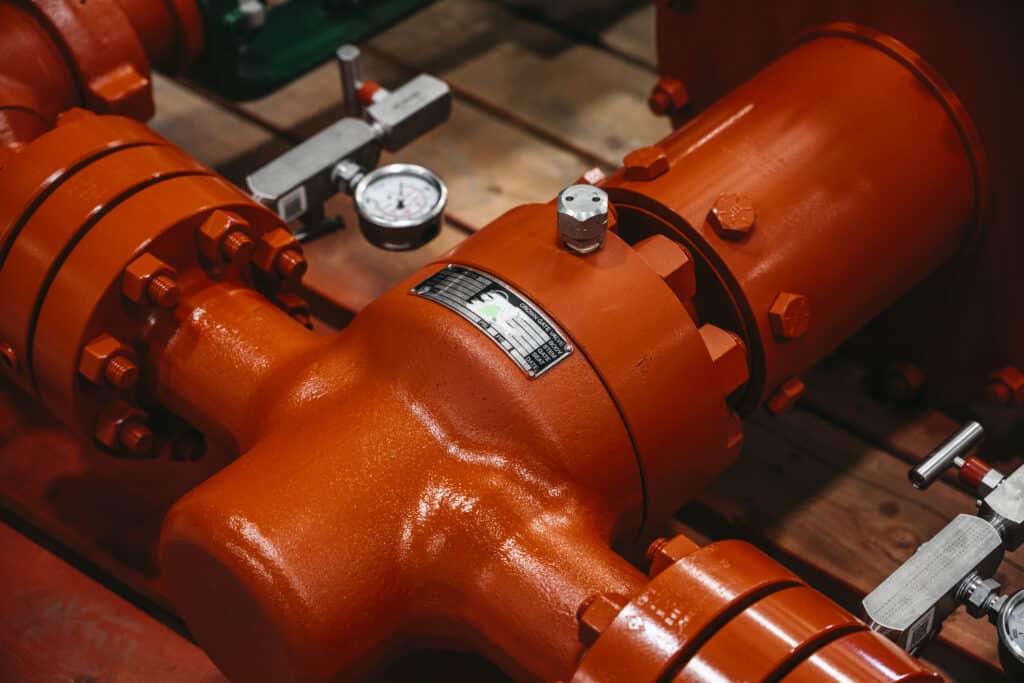Adapting existing carbon expertise critical to solving hydrogen-related equipment challenges
The smallest element in the world brings with it big potential and big hopes.
The easily escapable element is being eyed as one of the answers to arguably the biggest question of our time. How do we decarbonize without destabilizing?
As the world grows and that growth fuels an ever-increasing demand for energy, with more being consumed across the globe every single day, the reality of a decarbonization equation that addresses the climate change question adequately — without throwing the global economy into a tailspin, curtailing developing nations’ progress, driving inflation to higher levels, and most importantly, jeopardizing energy security on a massive scale — becomes more elusive.
So perhaps it’s fitting that many are looking to the elusive, yet extremely abundant element of hydrogen, as the answer.
The most abundant element in the Universe is highly combustible and when it burns the only byproduct it produces is water.
Almost sounds too good to be true. Why aren’t we all driving around in vehicles powered by hydrogen fuel cells then?
Two reasons.
Cost, and danger.
Current catalysts for hydrogen fuel cells, platinum chief among them, are too expensive to be commercially viable.
And as most of us know from the Hindenburg disaster, uncontained hydrogen can have catastrophic consequences.

Strides are being made in reducing the amount of expensive platinum that is required for hydrogen fuel cells. Honda and General Motors say they cut production costs for a CR-V hydrogen model by one-third by reducing how much of the rare metal was used. (Shutterstock)
The nascent hydrogen-as-energy industry is making progress, though, especially when it comes to the production and storage side of things, two aspects that will aid greatly in driving down the very high costs the two previously mentioned challenges pose.
Stream-Flo has been helping equip those undertaking both endeavours.
The global pressure control and valve company, which specializes in wellheads, gate valves, check valves, ball valves, and surface safety systems, has provided hydrogen wellheads and accoutrements for a production well in Mali and storage well in Alberta.
With over 60 years of experience helping the oil and gas industry safely contain surface pressure and transmit hydrocarbons from the well to further stages down the line, it’s their expertise in severe service applications that has positioned them to be a leader in the fledgling hydrogen arena, explains Stream-Flo Senior Adviser Keith Farquharson, who previously served as their vice president of technology.
“There was nothing on the well that we had to invent, we just had to rearrange some of the furniture in our existing product design,” said Farquharson about the spec for the hydrogen storage well in Alberta.

A Stream-Flo Crown Gate Valve lays on the shop floor after being fully assembled, tested, and painted. The company has created a suite of hydrogen-rated valves ranging from two to nine inches. (Redd Francisco)
Given hydrogen’s small size, containment was the first challenge tackled by Farquharson and the team on the project.
“Seal redundancy is a philosophy our customers use to reduce risk and that’s something we do routinely in the critical sour world,” said Farquharson of their experience dealing in hydrogen sulphide (H2S) environments. “Then from a molecule size, the testing we had done from fugitive emissions and the methane rules surrounding them, required testing with helium, and to learn how to make a seal work with helium, which is a similar sized molecule to hydrogen — and the same approach works. Now it becomes just a material problem.”

Stream-Flo Senior Advisor Keith Farquharson sits in his office in Edmonton, Alberta. For more than 35 years, Farquharson has helped develop and drive the technical and product development at Stream-Flo and is listed as an inventor on over 10 patents the company owns. (Redd Francisco)
Again, Stream-Flo’s expertise in the world of sour gas would come in handy, as Stream-Flo Project Engineering Manager Rick Miko, the person who led all the storage well design efforts for the company, details.
“We found that materials that are suited for H2S environments work very well in hydrogen storage environments,” said Miko. “You have the same design concerns with pure hydrogen that you would H2S and that would be embrittlement. Molecular hydrogen (H2) dissociates into hydrogen ions (H+), which then dissolve into the alloy, coalescing at flaws, or grain boundaries. When the H+ ions recombine into H2, they take up a much larger area than they did as individual ions, so the formation of the H2 molecule places stress on the metal lattice. If the microstructure is not sufficiently ductile to absorb these introduced stresses, it will become brittle, or crack. Using NACE compliant materials that have demonstrated sufficient ductility for H2S service gives us assurance that the material will be suitable in H2 service.”

A Stream-Flo wellhead near the town of Didsbury, Alberta. (Patrick Kelly)
The wellhead work taken care of, it was time for them to turn their sights on designing the hydrogen gate valves. These are the valves that come off the wellhead and run fully open or fully closed to either provide full flow of a liquid or gas in a pipeline, or completely shut it off.
Miko says designing them took some additional consideration.
“The valve has a little bit more risk than the wellhead because valves are the shutoff mechanism and have moving parts,” said Miko. “Dynamic seals are more challenging than static seals. Redundant seals are also easier to include and verify in the wellhead.”
Enter Stream-Flo Engineering Manager of Gate Valves Tom Gust.
“In some respect we entered into an experiment,” said Gust. “There’s no specifications that say you need to do this, this, and this, so you’re out there doing what you think is best.”
Some of the things Gust and his team figured would be best in a hydrogen-rated valve was a redundant seal above the stem packing and a welded hardface on the gate and seats.
“You try and limit porosity,” said Gust. “If you have porosity, then you’re reliant on a sealant and we thought with hydrogen, that’s not a good idea.”
Because, as Miko pointed out earlier, that porosity can lead to embrittlement and embrittlement can lead to a loss of containment. And a loss of containment with hydrogen, well, Hindenburg.
With their critical sour, high pressure, and materials engineering experience and expertise forming the design stage, it was time for the Stream-Flo hydrogen team to perform some prototype testing.
The testing was carried out in Stream-Flo’s over 300,000-square-foot manufacturing facility in Edmonton.
When all was said and done, the wellhead passed with zero issue.
“We had a couple of additional leak detection methods set up in addition to our standard procedure,” recalled Miko. “We had what is called a hydrogen sniffer that measured in parts per million and the acceptance criteria was zero parts per million, which we passed.”
The other leak detection tool was an infrared camera.
“Normally with gas, as it expands it heats up,” said Miko. “So if you have a leak, it will pick up the increase in temperature where it’s leaking.”
Like the sniffer, the infrared camera didn’t detect anything either. So Miko and everyone there wanted to make sure the instruments themselves were actually functioning.
“What we did is we disconnected all the pressure testing equipment and we actually just bled some hydrogen gas off from the storage tank,” said Miko. “Then all of a sudden the monitors started screaming at us and the infrared camera picked it up, so we knew the instruments were working.”
And the wellhead equipment, as planned, too.
With the gate valve, given its higher risk, a battery of tests were called for.

A Stream-Flo Crown AV Gate Valve which utilizes an expanding vented gate to provide a positive mechanical seal.
“We went over and above what we did for wellheads for our valves,” explained Miko. “We did the pure hydrogen testing, then we did a full PR2 Annex-F API 6A test, then we did a fire test. We did that for our suite of hydrogen valves, which goes all the way from two inches to nine inches.”
Testing done, it was time to send the finished products to site, where the real world would render its verdict.
The hydrogen storage well required solution mining to make the salt cavern where it would be stored. A full 24 months of continuous pumping of water into the salt formation to produce saltwater — and then reusing that saltwater to mine the cavern — was required, adding to the challenge facing Stream-Flo’s hydrogen project team.
“You can imagine saltwater and pressure and flow, and high volumes of flow — it’s a very erosive and corrosive environment,” said Miko. “We had to use materials and components that could both be used in a hydrogen environment and a saltwater environment.”
Doing so required being in lockstep with the different phases of the solution mining and storage well project, providing compatible equipment that could easily be swapped out given the current stage.
With the cavern created and two rounds of storage testing completed, Miko says their hydrogen equipment has performed as expected.
“It’s actually went really, really smooth,” said Miko. “It was a really smooth project start to finish and it was one of the more highly involved ones by both companies I’ve ever been a part of.”

Stream-Flo Project Engineering Manager Rick Miko discusses the company’s hydrogen product development in Edmonton, Alberta. (Redd Francisco)
What started off as an experiment, in some respect, as Gust said — albeit one informed through decades of solving some of oil and gas’ toughest challenges in the wellhead and valve space — has finished with two new hydrogen-rated product specifications for Stream-Flo.
“The oil and gas industry is going to be well equipped to handle this as a challenge, I think as an industry we are ready to start working on hydrogen projects,” summarized Farquharson, who has been studying the hydrogen-as-resource question for many years, in addition to steering Stream-Flo’s product development for it.
“There is no big supply of hydrogen, there’s great plans and lots of dreams and aspirations, but the hydrogen industry is small,” stated Farquharson. “There are six hydrogen storage wells in existence right now. That’s everywhere. We will be involved in the completion of more than six oil and gas wells today.”
That means expectations need to be tempered when it comes to hydrogen quickly rushing in to save the day, says Farquharson, though he adds there will definitely be a future opportunity around the element.
And it will be those at the forefront, such as Stream-Flo, who will be ready to help society realize that opportunity when it arrives by equipping the energy producers who are tackling all the big questions outlined at the beginning.
“There’s a carbon problem, and the experts on carbon are in the oil and gas industry right now,” said Farquharson. “That’s who’s going to solve this thing.”

Stream-Flo wellheads waiting to be installed in the Permian Basin.
